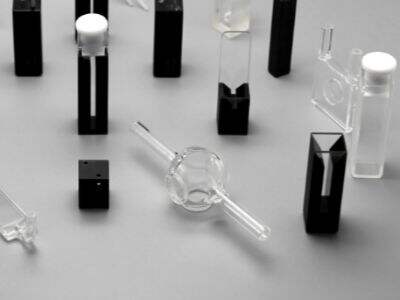Som en ung videnskabsmand kender du sandsynligvis allerede til, at forskning er nøglen til at forstå verden omkring os. Der er nogle redskaber, du har brug for, når du undersøger ting såsom små celler, fedtkemiske reaktioner eller andre spændende ting. gode og evaluering af resultater afhænger fuldstændig af brugen af de rigtige værktøjer. En kvartscuvette er ét af de vigtigste videnskabelige værktøjer for forskere i deres forskning.
Hvad er en Kvarts Cuvette?
En kvartscuvette er en type beholder, der bruges til at holde prøver af væsker og har flere fordele ved optiske målinger. Denne produceret i Tyskland kvarts glass er meget holdbart og næsten uforstyrret, og modstandsdygtig over for de fleste kemikalier. For at teste forskellige metoder og foretage forskellige eksperimenter, anvender forskere en ris kvartscuvette.
Hvis du undersøger, hvordan forskellige kemikalier reagerer med hinanden, for eksempel, kan du placere en lille mængde af disse kemikalier i en kvartskuve. Dette giver dig mulighed for at observere nøje, hvad der sker under reaktionen. Derefter kan du bruge et særligt metal kaldet spektrometer, som gør det muligt for dig at måle, hvordan lys passerer gennem prøven i kuven. Dette giver dig yderligere indsigt i, hvad der er til stede i prøven, samt hvordan de kemiske arter interagerer, når de bliver blandet.
Forskellige typer af Kvartskuver Brugt i Spektroskopi
Spektroskopi er ét af de områder, hvor videnskabsfolk ofte bruger kvartskuver. Metoden, kendt som spektroskopi, giver videnskabsfolk mulighed for at analysere, hvordan lys interagerer med forskellige materialer. Det er en afgørende proces både inden for kemi og biologi. Spektroskopi er studiet af, hvordan lys interagerer med materialer, og videnskabsfolk kan lære meget om egenskaberne ved materialer og hvordan de fungerer ved at bruge spektroskopi.
Kvarzcuvetter er særlig godt egnet til spektroskopi, da de ikke støder ind i absorptionsbånd og derfor lader meget lys gå igennem uden at blokere det. Når lys går igennem en kvarzcuvette, kan forskere observere meget gennemsigtige resultater. Cuvetten bør være så gennemsigtig som muligt for at få bedre målinger. Derfor er Kvarzcuvetter de foretrukne beholder i videnskabelig arbejde, når nøjagtig dataindsamling er nødvendig.
Udforsk genudtryk gennem kvarzcuvetter
Kvarzcuvetter bruges også til at studere genudtryk. Genudtryk ligner en opskrift: genen indeholder information om den, og når vi skal bruge den, skal vi oversætte informationen til et budskaber-RNA, og proteinet vil blive bygget efter denne note.
For at forstå genudtryk, skal forskere måle, hvor meget af et bestemt protein der produceres af et gen. Denne analyse kan udføres med en kvartskuve, der måler lyset, der udsendes af en bestemt fluorescerende protein. Når forskere lader lys falde på proteinet i kuven, vil proteinet fluorescere. Mængden af protein, der er til stede, korrelerer med, hvor klart lyset vil være. Det gør det muligt for forskere at afgøre, hvor aktivt et gen er ved at måle lysstyrken.
Kvartskuver og biomolekyler
Det betyder, at kvartskuver er nyttige til at studere kemiske reaktioner, genudtryk og yderst vigtige for analysen af biomolekyler. De molekyler, der er essentielle for liv: — Dette er byggestenet for liv, nemlig proteiner eller salter af proteinagtige organiske syrer, nucleinsyurer (DNA'er) og kulhydrater.)
Den høje kvalitet af kvartskuvetter er en anden grund til, at de er så nyttige ved studiet af biomolekyler, da de ikke reagerer med noget i prøve materialet. En sådan enkelhed betyder, at hvis en videnskabsmand sætter en prøve af biomolekyler i en kvartskuvette og observerer meget nøje lyset, der kommer ud af den, får de en meget præcis og klar visning af strukturen og sammensætningen af biomolekylernes. Det kan hjælpe videnskabsfolk med at få mere viden om, hvordan levende væsener fungerer.
 EN
EN
 AR
AR
 BG
BG
 HR
HR
 CS
CS
 DA
DA
 NL
NL
 FI
FI
 FR
FR
 DE
DE
 EL
EL
 HI
HI
 IT
IT
 JA
JA
 KO
KO
 NO
NO
 PL
PL
 PT
PT
 RO
RO
 RU
RU
 ES
ES
 SV
SV
 TL
TL
 ID
ID
 LV
LV
 SR
SR
 SK
SK
 UK
UK
 VI
VI
 HU
HU
 MT
MT
 TH
TH
 TR
TR
 FA
FA
 AF
AF
 MS
MS
 GA
GA
 IS
IS
 LA
LA
 KK
KK







